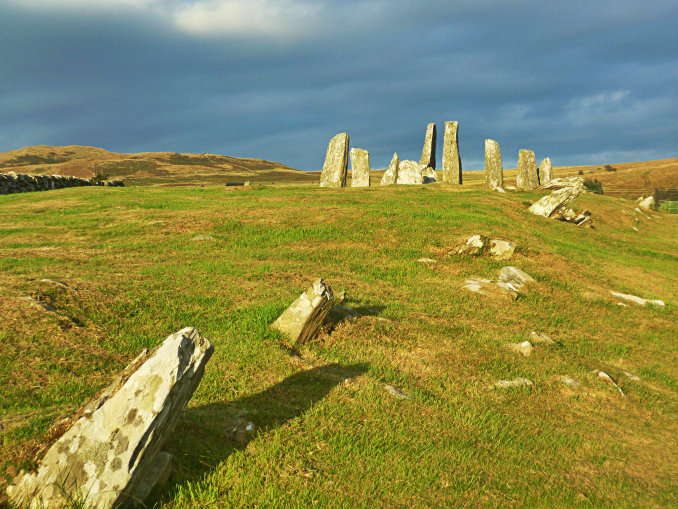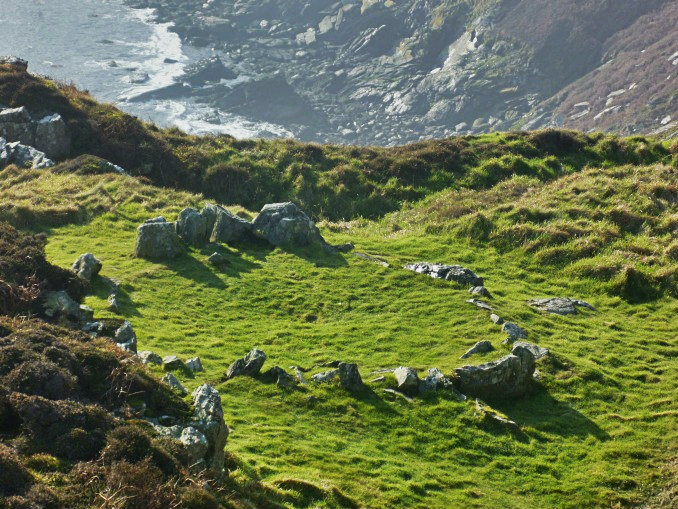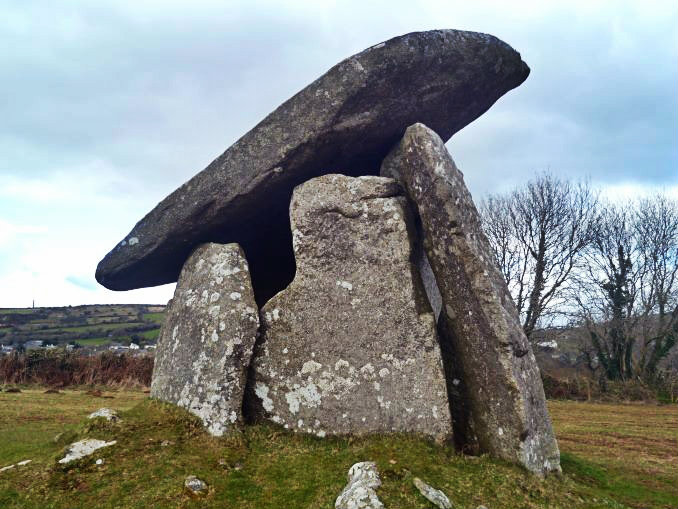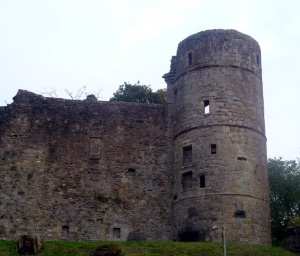Mysterious Stones under a Celtic Dome of Darkness

Ruined castles and ancient monuments can be mysterious places. Often their remote locations contribute to the sense of being in the presence of something beyond modern comprehension. Perhaps a feeling of something special, magical and unearthly, as if the stones themselves are trying to communicate with us. It is something as a Celt that touches you; that drags a memory from deep within. A secret message passed on to us by our ancient ancestors that remains in the hidden depths of our mind, struggling to emerge from our subconscious.
Around the Celtic world there are many cairns, stone circles, standing stones and carvings in rock from times of prehistory. Anyone visiting megaliths such as, to mention just a few, those found in Carnac in Brittany, Ring of Brodgar in Orkney, Newgrange in Ireland, Cashtal yn Ard in Isle of Man, Bry Celli Ddu in Wales, Hurlers Stone Circles/An Hurlysi in Cornwall, can feel the spiritual importance passed down through the centuries. Made by our ancestors in the dark Celtic lands of north-west Europe, we are their direct descendants. No surprise really then that the monuments that they created with such effort, care, skill and reverence should reach out to us from beyond the grave of their original creators, for we carry within us their genes.

Ancient stones and tombs placed in a way that look to the stars and capture moments of astronomical importance. The rising and setting of the sun and moon during the summer and winter equinoxes. The constellations formed in a vast dome of darkness that our ancestors thought gave special meaning to the world. They were right, for in seeking to understand the meaning of the universe and our own place within it, modern scientists look to the stars. Searching deeper and deeper into space for clues about the creation of our own planet and the development and evolution of life on earth. A life that could not exist without water; it is the primary constituent fluid in living things. There are a number of theories about the origin of water on earth. Amongst the favoured contributory factors is that water was brought by the comets and meteors from the main asteroid belt colliding with this planet. Of course, other factors are required in order that the special conditions necessary are created for life to evolve.
It is not surprising that the people of prehistory looked to the stars to seek the meaning of life. The stone monuments that stretch from the northern islands of Scotland - down into the Hebrides and the Scottish mainland - to the Isle of Man, Ireland, Wales, Cornwall and Brittany. All reflect the awe in which they held these celestial bodies. A feeling so strong that Celts who left their original homelands felt the need to re-create them in the ‘new world’. Such as was the case with the Australian Standing Stones. But it was not just the stones placement that had significance. It was the stones themselves. We know that the minerals and metals contained within rocks were essential to human civilisation. However, it is interesting in regard to research into Stonehenge, which dates back to 3000BC and beyond, that it was the smaller bluestones within that monument that had a particular significance. These bluestones came from Carn Menyn and other sites in the Preseli Hills of Wales and were thought to have special healing powers.

Often when people visit the ancient megaliths in the Celtic lands they feel a desire to touch them. To feel a connection as if the stones themselves could convey a special message. It is a sensation that can come from deep within the Celtic psyche. It is an impression that carries on to more recent structures, such as the castles constructed in the Medieval period. The ruins of these fortresses are found scattered around the Celtic nations. They speak of a time of conflict, turmoil, intrigue and dark deeds. So many of these places come with tales of hauntings, as if the very fabric of the buildings held the essence of those that once lived within their somber foreboding walls. Misery and lament soaked into the very stone work. How many times have we heard it said about old buildings “if only these walls could speak.”

Of course within walls more tangible secrets can be uncovered. Like in Strathaven Castle in South Lanarkshire, Scotland. The present structure was built in the 1400’s on the site of earlier castles. Local legend told of a wife of a past Lord who having upset her husband was walled up in a small niche and left to starve. This story was passed down through the generations with tales of hauntings which were often dismissed as nonsense. Or at least it was, until during the 19th century, part of a wall fell down and human bones were discovered. The ghost of the white lady of Strathaven Castle is still said to haunt the building. Plenty of castles have ghost stories attached to them. Many people will make light of such things, but few would ever take the chance to remain in these buildings on dark nights.
However, it is the feeling that ancient monuments and castles evoke which most people sensitive to such things experience. Maybe it is being romantic. Perhaps the fertile imagination of those who seek a deeper meaning to life than the crude greed and consumerism that pervades our modern existence. Go and see for yourselves. Visit with an open mind. For it is difficult not to be impressed by the effort, skill, thought, reverence and astronomical know how of our ancestors from the Mesolithic into the Neolithic past. Perhaps they did know something that we, in our modern arrogance, have forgotten. Touch the stones, feel the memory that stretches back beyond the estimated 4.54 billion year old history of the earth, into the stars from where we came and which the ancients recognised. These stones had special meaning and it is one that transmits through to us today.
Further reading
The Australian Celtic Standing Stones
Cairnholy Chambered Tomb, Scotland
Cronk Karran, Isle of Man
Trethevy Quoit, Cornwall
Content type:
- Pan-Celtic
Language:
- English
- Log in to post comments






